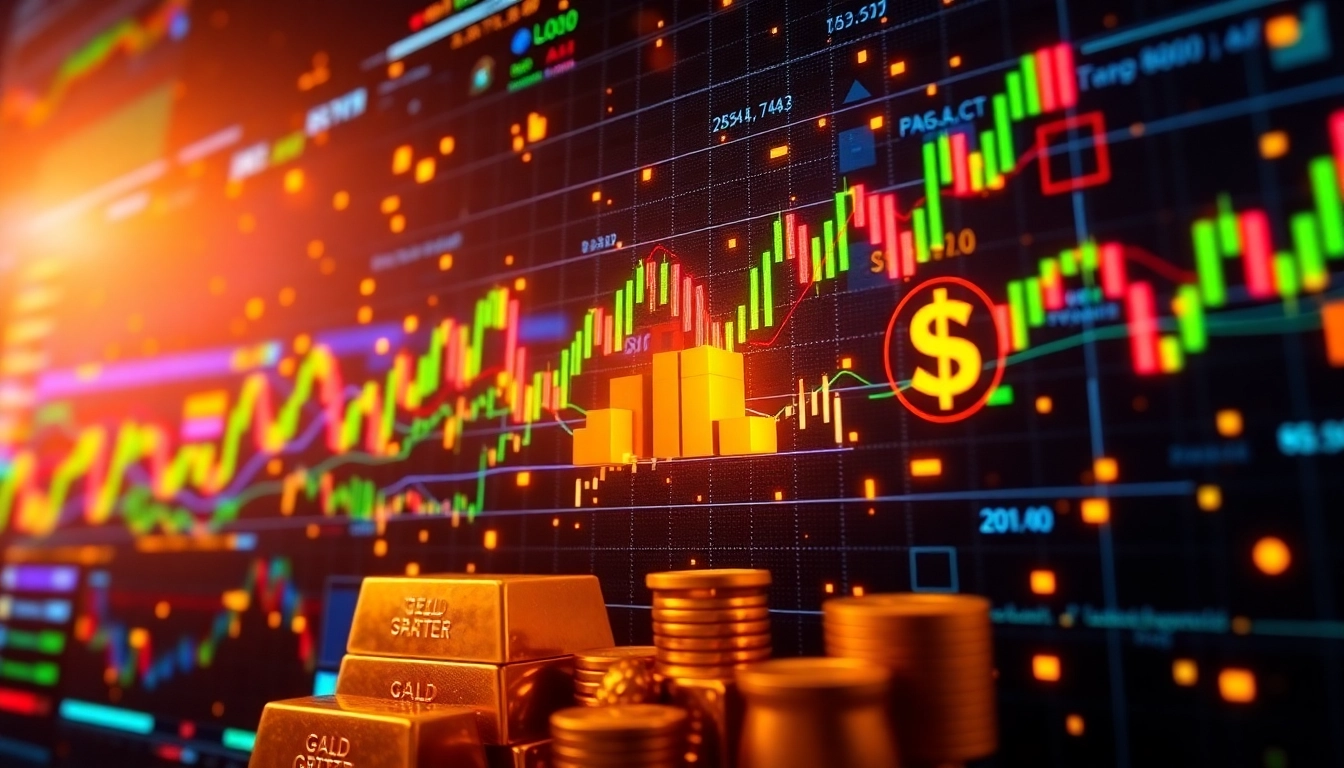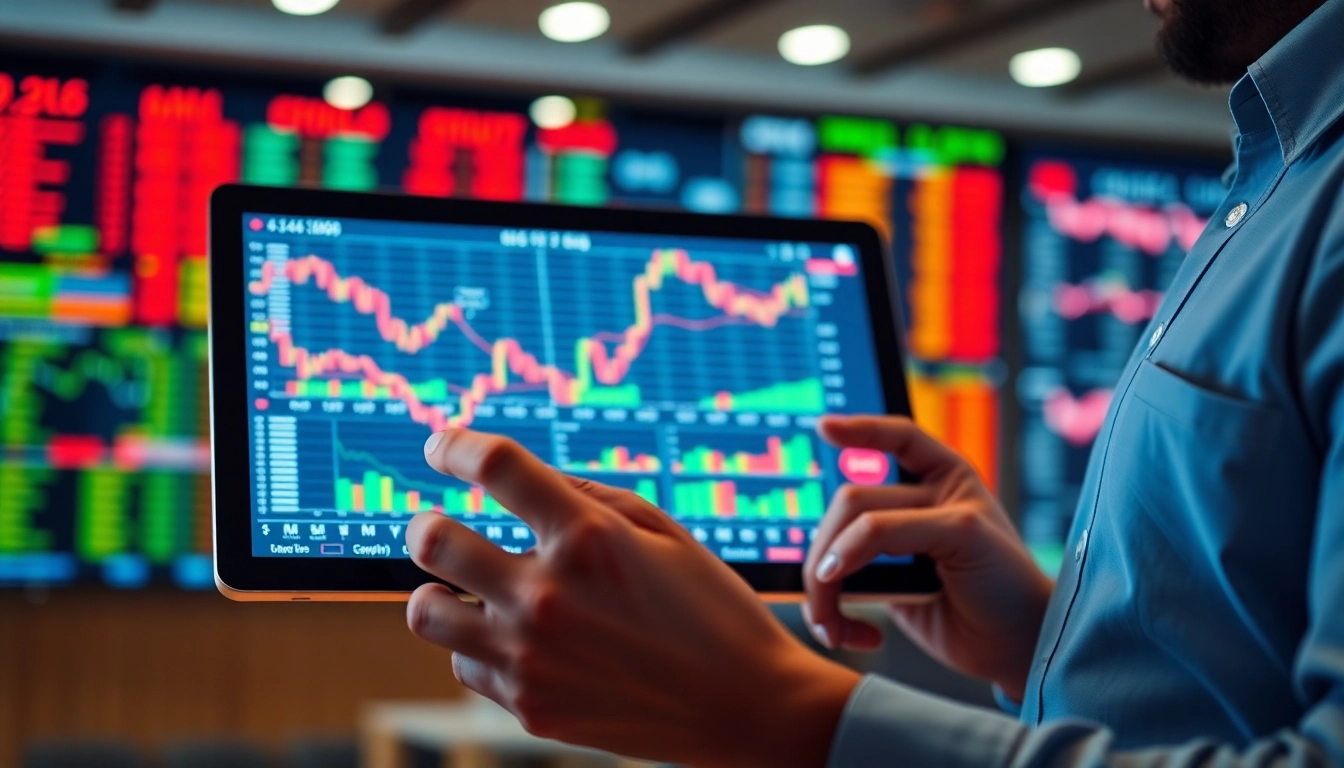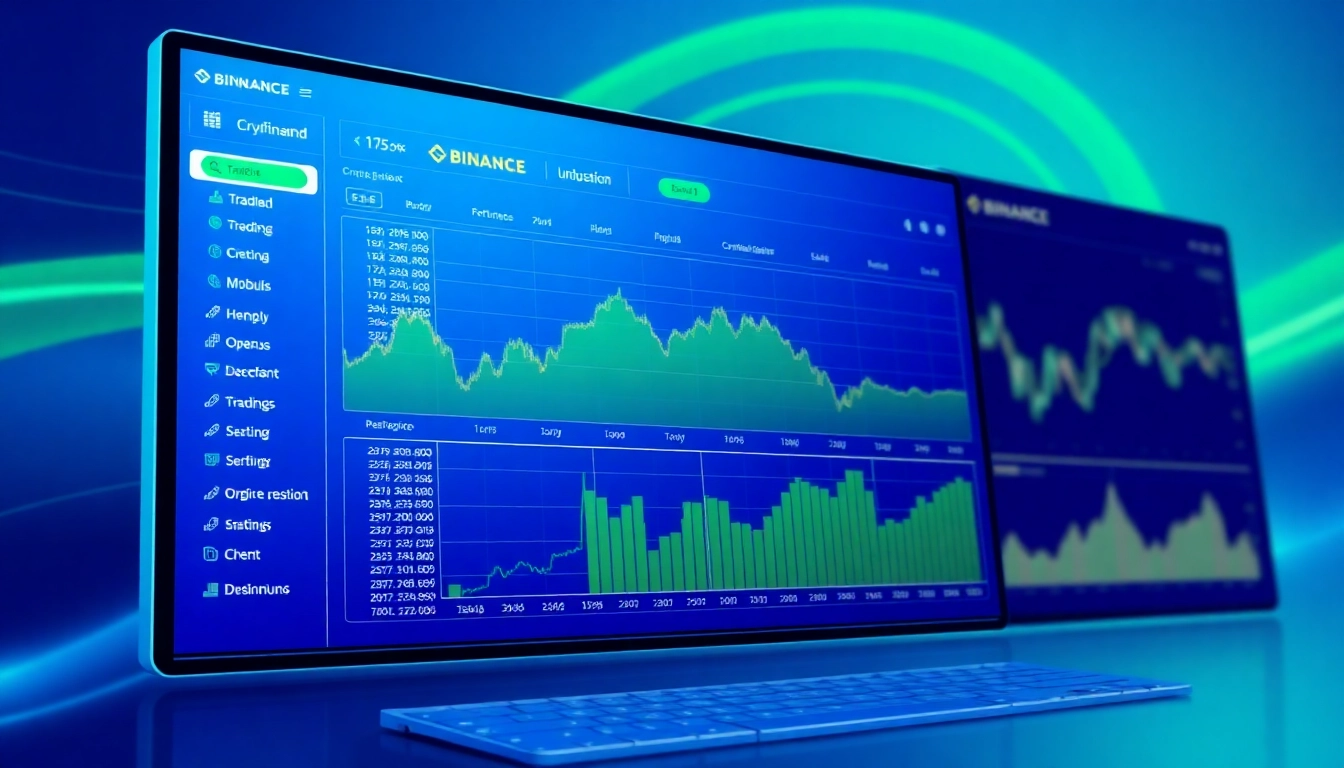Current Dynamics of Global Trading News: An In-Depth Analysis
The world of finance continues to oscillate amid a complex array of economic indicators, geopolitical tensions, and technological innovations. Investors and traders worldwide are keenly observing the latest developments, from stock market fluctuations to commodity price shifts, currency movements, and the evolving landscape of cryptocurrencies. To stay ahead, understanding these interconnected factors is crucial. For those seeking comprehensive insights into these dynamics, Global Trading News offers an invaluable resource to navigate this ever-changing environment.
Analyzing Stock Market Movements and Key Indices
Overview of Major Stock Indices and Recent Performance
Recent trading sessions have shown mixed signals across major global stock indices. European shares, represented by the pan-European STOXX 600, marginally rose by approximately 0.17%, closing at 551.07 points, buoyed by strength in defense stocks amidst geopolitical uncertainties. Meanwhile, the U.S. stock markets experienced a decline, with major indices dipping amid rising concerns over inflation data and Federal Reserve policy signals.
Notably, the Nikkei index in Japan reached a record high, extending its gains as investors bet on continued economic recovery in the region. These contrasting performances highlight the complexity inherent in global markets, where regional economic data, monetary policies, and geopolitical developments all influence investor sentiment.
Sector and Asset Class Trends
Within equities, sector-specific movements are noteworthy. Banking and mining stocks led the FTSE 100’s rebound, reflecting optimism in commodity prices and financial stability. Conversely, technology shares faced pressure due to broader macroeconomic concerns and regulatory scrutiny. Asset classes such as gold surged past previous records, hitting an unprecedented $3,501.59 per ounce, driven by inflation fears and safe-haven demand.
Impact of Geopolitical and Economic Factors on Markets
Global Economic Trends and Political Developments
The global economic landscape remains sensitive to geopolitical events. The U.S.-China trade relations, ongoing tensions in the Middle East, and the European Union’s regulatory stance significantly influence market trajectories. For instance, recent US advisories and speeches have spurred fluctuations in commodities and currency markets, as investors interpret policy signals for future growth and stability.
Regulatory and Policy Influences
Major regulatory developments include Europe’s cautious approach towards cryptocurrencies, exemplified by the Bank of England’s warning to Facebook regarding the Libra project, and increased scrutiny of crypto exchanges like Coinbase and MicroStrategy. These regulatory signals act as catalysts or dampeners for specific sectors and influence investor confidence globally.
Economic Data and Market Sentiment
Key data points such as U.S. labor market reports, inflation figures, and GDP growth rates shape market expectations. Recent U.S. labor data hinted at a resilient economy, affecting expectations of Fed rate adjustments. Such data points drive currency valuations, with the dollar weakening slightly as traders anticipate a pause or reversal in aggressive monetary tightening.
Recent Shifts in Commodity Prices and Market Drivers
Gold’s Bullish Run and Investment Implications
Gold prices continue their upward trajectory, hitting a new record of over $3,500 per ounce. This surge is primarily driven by inflation concerns and geopolitical uncertainties, prompting investors to seek refuge in safe assets. The recent U.S. inflation data, indicating persistent price pressures, has further supported gold’s rally, emphasizing its role as an inflation hedge in diversified portfolios.
Oil Market Fluctuations and Weekly Outlook
Oil prices have experienced a decline of approximately 0.6% to around $68.23 per barrel for October delivery, yet analysts suggest the market is set for a weekly gain. Factors influencing oil include US market comments, US-China trade tensions, and OPEC+ production decisions. The broader trend points toward cautious optimism, with geopolitical tensions and supply considerations continuing to impact pricing dynamics.
Commodity Strategies for Traders
Successful trading in commodities involves monitoring geopolitical developments, inventory reports, and macroeconomic indicators. Hedging strategies, options, and futures contracts are essential tools to manage volatility and capitalize on trend shifts.
Currency Fluctuations and Forex Market Trends
US Dollar Performance and Economic Significance
The US dollar has experienced a slight weakening, dropping 0.04% against the yen to approximately 146.98, influenced by expectations of a potential rate pause or cut. The dollar’s movements are critical barometers for global trade, affecting import-export balances and cross-border investments.
European and Asian Currency Dynamics
The euro appreciated by about 0.25% to $1.1710, reflecting improved investor confidence tied to resilient economic data. Similarly, the Australian dollar rose, mirroring commodity price stability and risk sentiment. In Asia, currencies traded marginally higher, often in response to U.S. rate expectations and regional growth prospects.
Future Forex Trends and Geopolitical Impact
Forecasts suggest that geopolitical tensions and monetary policy cues will continue to drive forex rates. An anticipated U.S. rate cut could further weaken the dollar, potentially boosting emerging market currencies but also increasing volatility for traders engaged in carry trades or currency futures.
The Cryptocurrency Market: Developments and Projected Trends
Bitcoin, Ether, and Emerging Altcoins
Cryptocurrency markets present a mixed picture. Bitcoin remains relatively flat, yet its long-term bull prospects hinge on key technical levels, such as the 200-week trendline, which if maintained, could propel prices higher. Ether’s rally has slowed, with market cap reaching over $9.3 billion, amid broader concerns about regulatory crackdowns and institutional adoption.
Regulatory Actions and Market Impact
Recent SEC actions, including scrutinies on Coinbase and SEC filings impacting crypto trading revenues, have introduced volatility. Nonetheless, institutional interest remains robust, with MicroStrategy possibly initiating a bitcoin buying spree, signaling confidence in digital assets as part of strategic allocations.
Emerging Trends and Growth Opportunities
Innovations like decentralized finance (DeFi), non-fungible tokens (NFTs), and blockchain-based assets are gaining traction. Although NFT market cap recently dropped by $1.2 billion as Ether’s rally slows, the sector remains significant for digital innovation and future growth prospects.
Strategies for Navigating a Volatile Market
Risk Management Best Practices
In volatile conditions, diversification and disciplined stop-loss strategies are vital. Utilizing technical analysis tools such as moving averages, RSI, and MACD can help identify entry and exit points, minimize losses, and maximize gains.
Leveraging Technical Indicators and Market Signals
Market indicators provide insights into momentum and trend strength. For example, adherence to the 200-week trendline in crypto signals bullish momentum, while divergence in volume and price can warn of potential reversals.
Long-Term vs. Short-Term Approaches
Traders should tailor their strategies: long-term investors may focus on fundamental value, gold, or cryptocurrencies with strong growth narratives, while short-term traders might exploit market swings through套利 and options strategies for quick gains.
Forecasting Future Market Movements and Opportunities
Anticipated Post-U.S. Labor Data Trends
Upcoming U.S. labor reports will be pivotal. Strong employment data may reinforce Fed’s rate-hike outlook, potentially strengthening the dollar and impacting equities and commodities negatively. Conversely, weaker data could lead to a policy pause, supporting risk assets.
Investment Opportunities in Gold, Equities, and Cryptos
Given current conditions, gold remains a prime hedge against inflation. Equity opportunities lie in sectors resilient to rate changes, such as defense and commodities. Cryptocurrencies continue to present high-risk, high-reward profiles, especially as institutional adoption accelerates.
Utilizing Modern Trading Tools and Resources
Advancements in AI-powered analytics, real-time news feeds, and algorithmic trading platforms equip traders to react swiftly to market moves. Staying informed with expert analysis and leveraging technological tools will be essential to capitalize on emerging opportunities.



